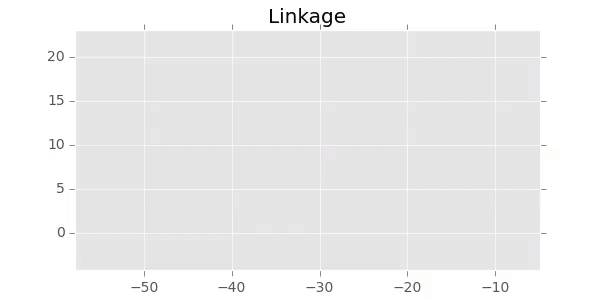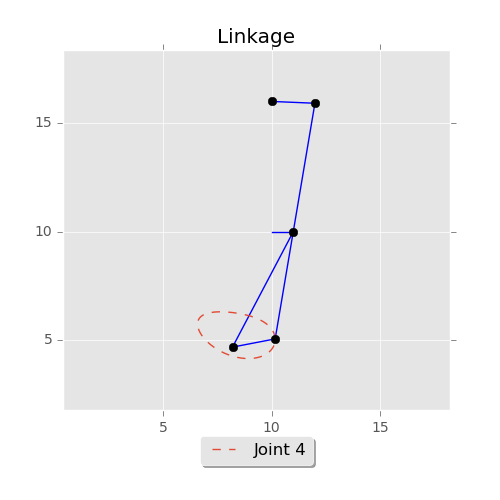Plynk is a Python library that provides geometric simulation of planar linkage mechanisms.
Plynk depends on Matplotlib and numpy and is built for Python 2.7.
Plynk is a self-contained Python package. To use it, download the plynk folder and place it in the same directory as the code that imports it.
from plynk import Joint, Bar, Linkage, joint, visualization
from plynk.driver.crank import Crank
j1 = Joint("j1", location = (10, 16), fixed = True)
j2 = Joint("j2", chooser = joint.greater_x)
j3 = Joint("j3")
j4 = Joint("j4")
j5 = Joint("j5", chooser = joint.lesser_x)
top_bar = Bar("top_bar", [j1, j2], [2])
main_bar = Bar("main", [j2, j3, j4], [6, 5])
hypot = Bar("hypot", [j3, j5], [6])
base = Bar("base", [j4, j5], [2])
crank = Crank("crank", (10, 10), j3, 1)
linkage = Linkage([top_bar, main_bar, hypot, base],
[j1, j2, j3, j4, j5],
[crank])
visualization.linkage_image(linkage, track_joints=[("Joint 4", j4)]).show()
raw_input("Press enter to exit.")Running this script produces the following graphic showing an example linkage mechanism and the path traced by the movement of one of its joints over time:

